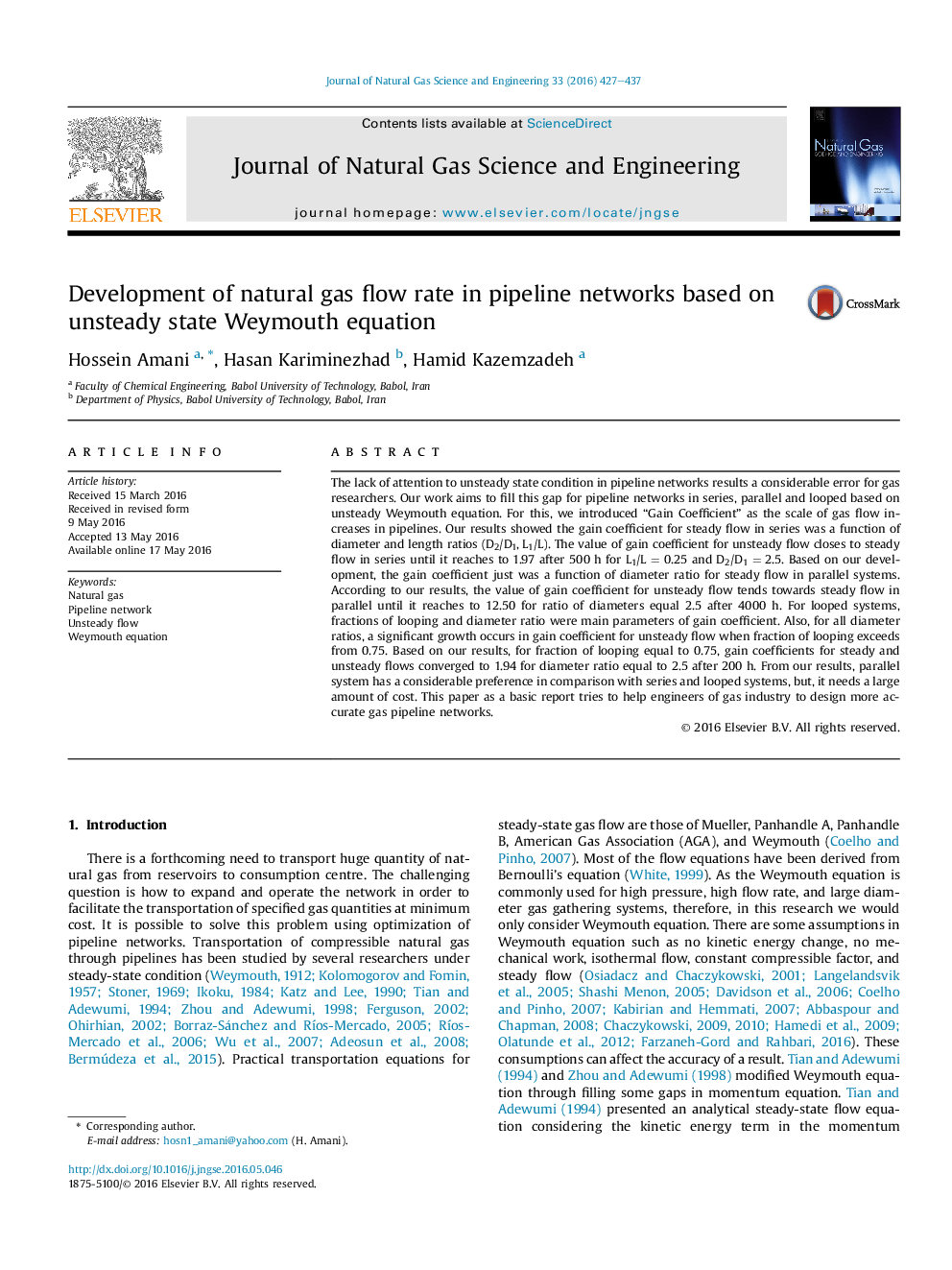| کد مقاله | کد نشریه | سال انتشار | مقاله انگلیسی | نسخه تمام متن |
|---|---|---|---|---|
| 1757081 | 1523008 | 2016 | 11 صفحه PDF | دانلود رایگان |
• We developed an analytical model based on unsteady-state Weymouth equation.
• We introduced “Gain Coefficient (G)” as a scale of increase of gas flow in pipeline.
• Gain coefficient increases for all network systems with a preference to parallel system.
• Our results are useful for engineers to make more accurate flow capacity forecasts.
The lack of attention to unsteady state condition in pipeline networks results a considerable error for gas researchers. Our work aims to fill this gap for pipeline networks in series, parallel and looped based on unsteady Weymouth equation. For this, we introduced “Gain Coefficient” as the scale of gas flow increases in pipelines. Our results showed the gain coefficient for steady flow in series was a function of diameter and length ratios (D2/D1, L1/L). The value of gain coefficient for unsteady flow closes to steady flow in series until it reaches to 1.97 after 500 h for L1/L = 0.25 and D2/D1 = 2.5. Based on our development, the gain coefficient just was a function of diameter ratio for steady flow in parallel systems. According to our results, the value of gain coefficient for unsteady flow tends towards steady flow in parallel until it reaches to 12.50 for ratio of diameters equal 2.5 after 4000 h. For looped systems, fractions of looping and diameter ratio were main parameters of gain coefficient. Also, for all diameter ratios, a significant growth occurs in gain coefficient for unsteady flow when fraction of looping exceeds from 0.75. Based on our results, for fraction of looping equal to 0.75, gain coefficients for steady and unsteady flows converged to 1.94 for diameter ratio equal to 2.5 after 200 h. From our results, parallel system has a considerable preference in comparison with series and looped systems, but, it needs a large amount of cost. This paper as a basic report tries to help engineers of gas industry to design more accurate gas pipeline networks.
Schematic diagrams of (a) a series pipeline, (b) a parallel pipeline and (c) a looped pipeline.Figure optionsDownload high-quality image (129 K)Download as PowerPoint slide
Journal: Journal of Natural Gas Science and Engineering - Volume 33, July 2016, Pages 427–437
